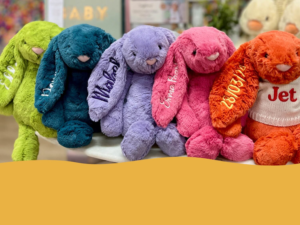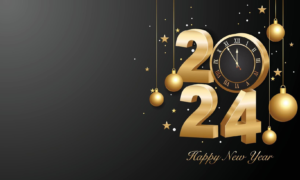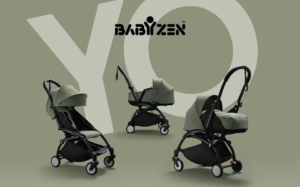
minnie mouse
Introduction: The Magic of Minnie Mouse
Minnie mouse Minnie Mouse, the beloved counterpart to Mickey Mouse, has been a cultural icon for nearly a century. Since her debut in 1928 alongside Mickey, she has captured the hearts of children and adults alike with her charm, style, and playful personality. But Minnie is more than just a cartoon character—she represents timeless values, including kindness, positivity, and friendship. Whether she’s dressed in her classic polka-dot dress or taking on new roles in modern media, Minnie’s influence continues to grow, making her a true icon in both animation and pop culture.
Minnie’s origins can be traced back to the golden age of animation, where she emerged as one of Disney’s first female characters. Despite starting as a supporting figure, her role evolved, and she became a standalone character with a personality that transcends mere appearance. Minnie embodies love, loyalty, and creativity, endearing her to fans across generations.
In this article, we’ll explore the rich history of Minnie Mouse, her development over the decades, her cultural impact, and her continued relevance today. From her humble beginnings in black-and-white animations to her status as a fashion symbol and modern feminist icon, Minnie’s journey is both fascinating and inspiring.
The Origins of Minnie Mouse: Where It All Began

Minnie Mouse made her first appearance in 1928’s Steamboat Willie, the same short film that introduced Mickey Mouse. Created by Walt Disney and Ub Iwerks, she was designed to be Mickey’s love interest and co-star in many early animations. Her first appearance was simple yet effective: a lively, cheerful character with a big bow and classic polka-dot dress that would become her signature look.
Walt Disney originally voiced both Mickey and Minnie, and their playful chemistry was evident from the start. The early shorts portrayed Minnie as a damsel in distress, a trope common in the era. However, as animation evolved, so did Minnie’s character. By the 1930s, she was taking on a more active role in stories, contributing to the comedic and adventurous elements of the shorts alongside Mickey.
Despite the limited range of roles for female characters in early cartoons, Minnie quickly established herself as more than just Mickey’s love interest. Her intelligence, charm, and wit made her a fan favorite, and she became one of Disney’s most popular characters. Minnie’s early years may have set the foundation, but it was her evolution into a multi-dimensional character that cemented her legacy.
The Evolution of Minnie’s Character: From Damsel to Independent Icon
As Minnie Mouse grew in popularity, her character development mirrored cultural shifts in society. In the early cartoons, she often played the role of the damsel who needed to be rescued by Mickey. However, the 1940s and 1950s saw a gradual change in how Minnie was portrayed. She began to take on more significant roles in the storylines, often contributing to solving problems rather than being the cause of them.
The 1980s marked a significant shift in Minnie’s character, with the emergence of strong, independent female figures in media. Minnie’s role as an independent icon started to take shape, particularly with the introduction of television shows like Mickey Mouse Clubhouse and House of Mouse, where she was depicted as a leader, problem-solver, and equal partner to Mickey. She was no longer confined to the sidelines but was often at the forefront, playing a key role in guiding the group through challenges.
This change in Minnie’s character aligns with the broader movement of women’s empowerment in society. She became a symbol of female independence, intelligence, and grace. Minnie’s ability to balance her classic charm with a newfound sense of agency resonated with modern audiences, ensuring her relevance in contemporary culture.
Minnie’s Signature Style: Fashion Icon in Polka Dots
One of Minnie Mouse’s most defining characteristics is her fashion sense. From her debut, her classic polka-dot dress and oversized bow have become iconic symbols, instantly recognizable around the world. But Minnie’s fashion journey didn’t stop there—over the decades, her style has evolved while still maintaining that signature Minnie flair.
Minnie’s polka dots are more than just a fashion statement; they represent her playful and joyful personality. She has been a trendsetter in her own right, inspiring clothing lines, accessories, and even high fashion collaborations. Designers from Marc Jacobs to Kate Spade have created Minnie-inspired collections, proving that her influence extends beyond the world of animation into real-world fashion.
What makes Minnie a true fashion icon is her timelessness. Her look has adapted to different eras without losing its essence. Whether she’s in her classic red-and-white polka dot dress or a chic, modern outfit, Minnie’s fashion always exudes elegance, charm, and a sense of fun. She appeals to both children who admire her playful outfits and adults who see her as a symbol of enduring style.
Minnie Mouse in Television and Film: A Star Across Generations
Minnie’s presence on television and in films has spanned decades, and she’s as relevant today as she was during her early days. After her debut in Steamboat Willie, she went on to star in countless animated shorts, films, and television shows. Some of her most memorable appearances include The Gallopin’ Gaucho (1928), The Nifty Nineties (1941), and Brave Little Tailor (1938).
In the more modern era, Minnie became a fixture on television, with shows like Mickey Mouse Clubhouse (2006–2016), which introduced her to a new generation of young fans. Minnie’s nurturing, motherly nature, combined with her problem-solving skills, made her a favorite character for young viewers. Her television roles expanded beyond just being Mickey’s partner—she became a key figure in teaching important lessons about teamwork, friendship, and creativity.
In addition to her animated roles, Minnie has also appeared in a range of merchandise, video games, and theme park attractions. Her versatility as a character allows her to fit seamlessly into various forms of media, from children’s programming to theme park experiences at Disneyland and Disney World. No matter the medium, Minnie’s charm and timeless appeal shine through.
Minnie Mouse: A Symbol of Feminism and Empowerment
While Minnie Mouse’s early appearances may have portrayed her as the quintessential “girlfriend” figure, her evolution into a feminist icon cannot be understated. Over the years, Minnie’s character development has mirrored the changing roles of women in society. She transitioned from a supporting character to a strong, independent figure who can stand on her own.
In recent years, Minnie has become a symbol of female empowerment, particularly in how she is marketed and portrayed in media. Minnie’s autonomy is emphasized, and she is frequently depicted making her own decisions, leading groups, and tackling challenges. She’s no longer just Mickey’s sidekick—Minnie is a star in her own right, inspiring young girls to embrace their individuality and confidence.
Minnie’s influence in this realm extends beyond animation. She has been at the forefront of movements for gender equality, with campaigns promoting her as a role model for young girls. In 2018, Minnie received a star on the Hollywood Walk of Fame, solidifying her place not only as an entertainment icon but as a figure of empowerment for women around the world.
The Legacy of Minnie Mouse: An Enduring Cultural Icon
Minnie Mouse’s legacy is vast and enduring, with her influence touching every corner of pop culture. She is not only a symbol of Disney’s history but also a representation of timeless values like kindness, generosity, and resilience. Her image can be found on everything from clothing to toys, making her one of the most recognizable characters in the world.
Part of Minnie’s enduring appeal is her adaptability. While she remains rooted in the classic animation style that made her famous, she has also evolved to meet the needs of new audiences. Whether through social media, modern television shows, or merchandise, Minnie remains a beloved figure across generations.
As we look to the future, it’s clear that Minnie Mouse will continue to inspire and captivate audiences. Her timeless charm, combined with her evolving role in society, ensures that she will remain a cultural icon for years to come. From children who are just discovering her to adults who have grown up with her, Minnie’s magic is something that transcends age, gender, and time.
Minnie Mouse Merchandise: The Global Phenomenon
When it comes to merchandise, few characters can rival the global influence of Minnie Mouse. Her image graces everything from backpacks and t-shirts to home décor and even luxury fashion accessories. Minnie Mouse merchandise is not just for children; her appeal has grown to include adults, who appreciate her nostalgic charm as well as her stylish persona.
Disney has masterfully marketed Minnie as a multi-generational icon. Limited-edition collectibles, theme park-exclusive items, and collaborations with top fashion designers have solidified her status as a merchandise powerhouse. Some of the most popular Minnie Mouse-themed products include plush toys, clothing, and accessories, but her influence has also expanded into high-end items like jewelry, handbags, and shoes.
Part of what makes Minnie Mouse merchandise so successful is its ability to capture the essence of her character. Whether it’s a playful polka-dot pattern or a bold red bow, Minnie’s image remains timeless and instantly recognizable. Fans of all ages continue to seek out new ways to incorporate Minnie into their lives, ensuring that her merchandise will remain in high demand for years to come.





